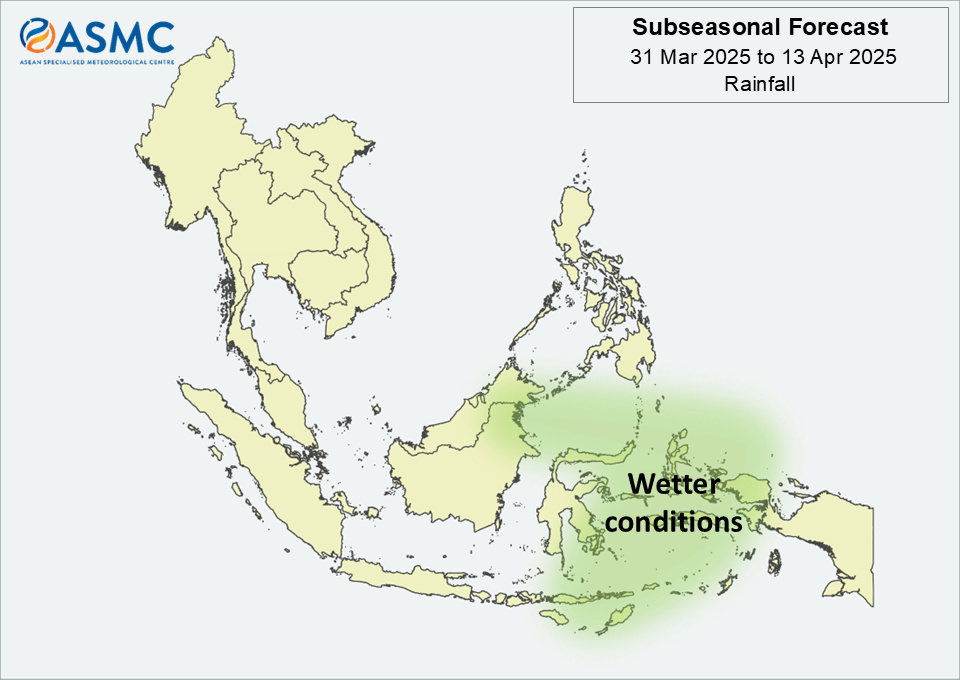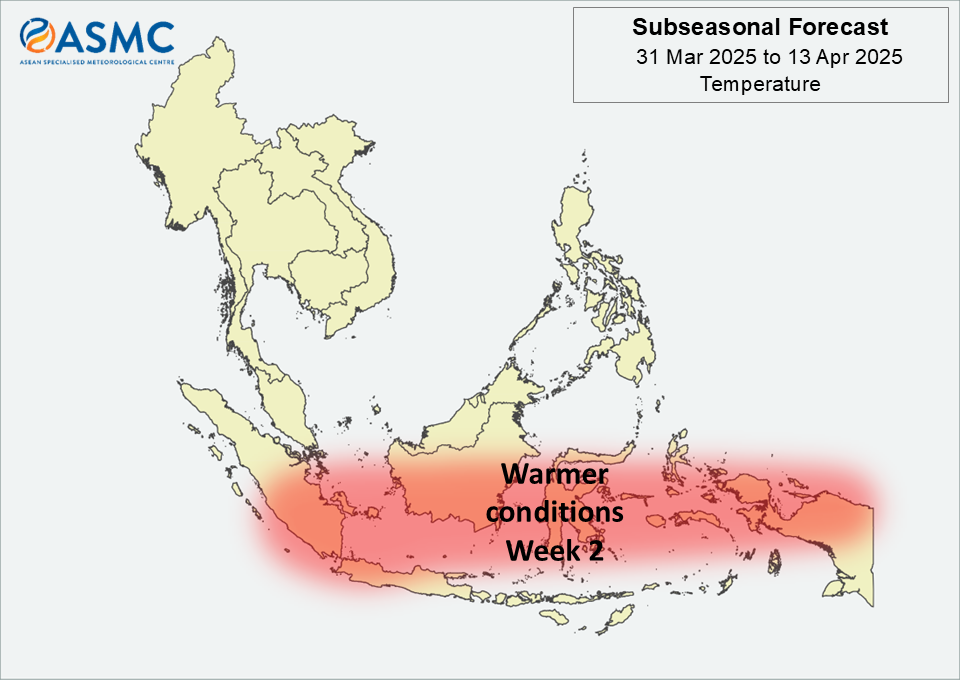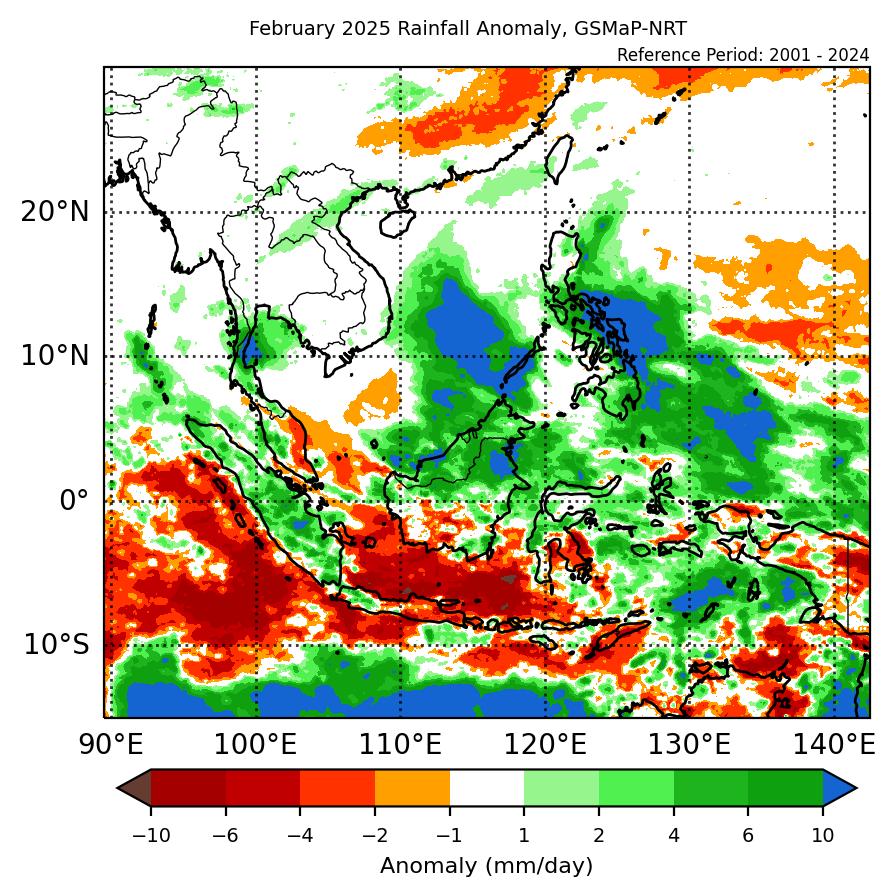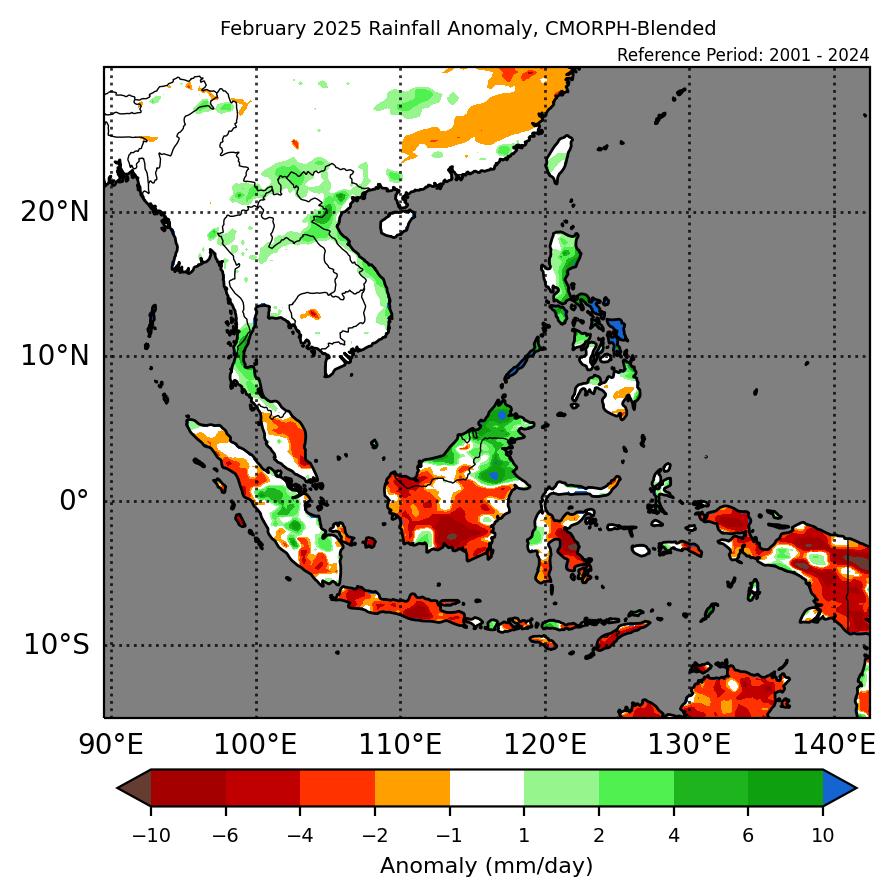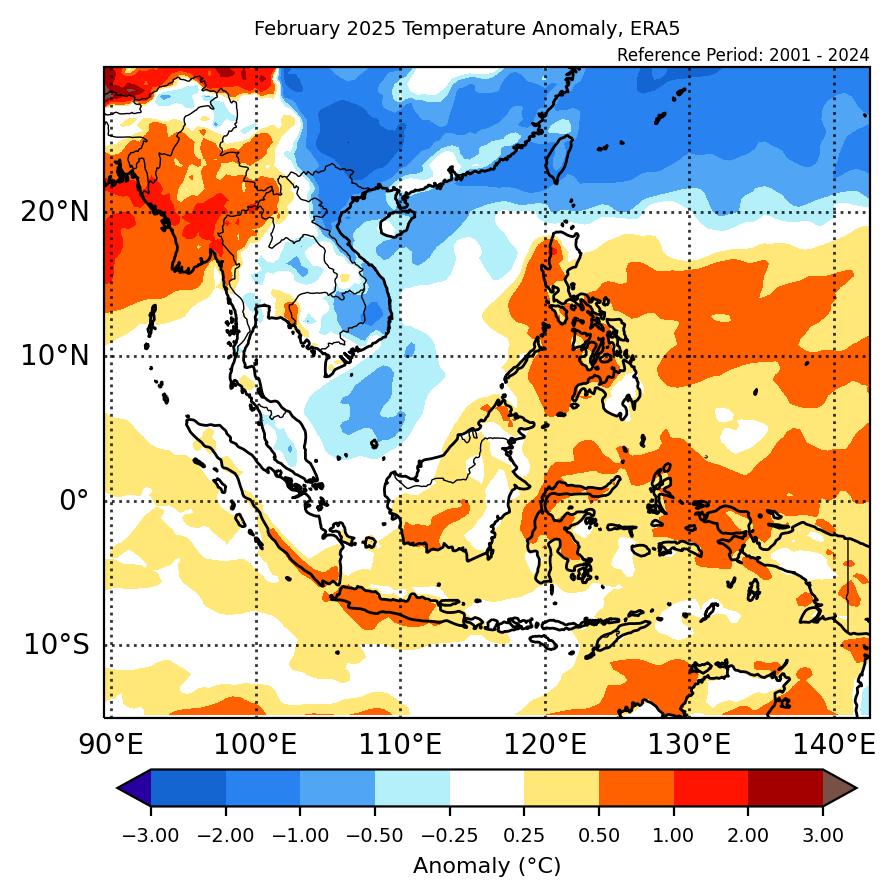Review of Regional Haze Situation for February 2025
1.1 Northeast monsoon conditions prevailed throughout February 2025. The prevailing low-level winds generally blew from the northeast or east over areas north of the Equator, except over the Mekong sub-region where the prevailing winds were light and variable in direction (Figure 1). Over areas south of the Equator, the prevailing low-level winds blew from the west or northwest which gradually weakened to become light and variable in direction towards the end of the month.
1.2 Dry conditions continued over most areas of the Mekong sub-region and the northern parts of the Philippines. Relatively drier conditions were also observed over some parts of Peninsular Malaysia under the influence of the dry phase of the Northeast Monsoon. Higher rainfall was recorded over the rest of the ASEAN region, particularly over the southern parts of the Philippines and Sumatra where rainfall was more intense (Figure 1). Flooding and landslides were reported over parts of Indonesia and the Philippines, causing infrastructural damage and displacing people from homes.
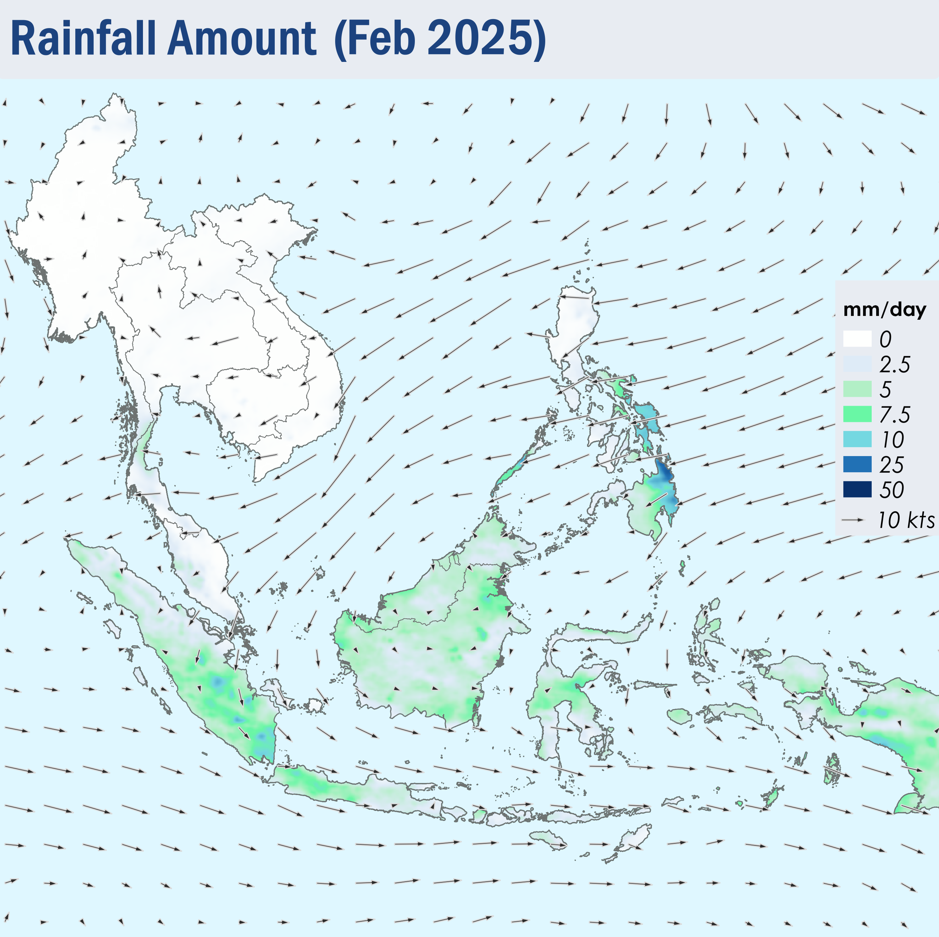
Figure 1: Average Daily Rainfall and Mean Winds for February 2025. (Source: JAXA GsMaP and GFS, respectively)
1.3 The overall hotspot counts for the ASEAN region in February 2025 were lower than or comparable to those in the same period in previous years (Figures 2 & 3).
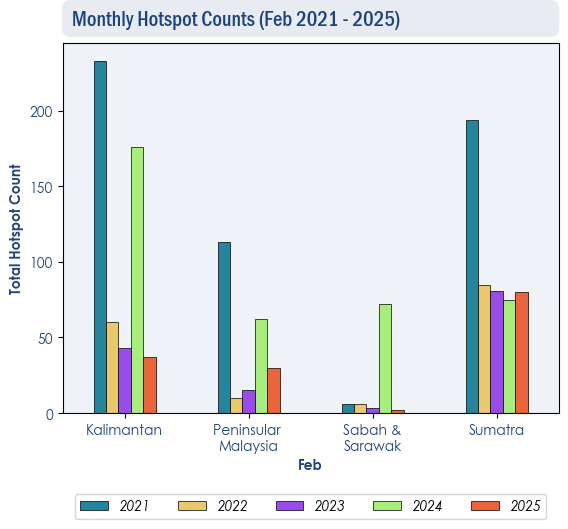
Figure 2: Hotspot counts for the southern ASEAN region for February (2021-2025) based on NOAA-20 satellite surveillance.
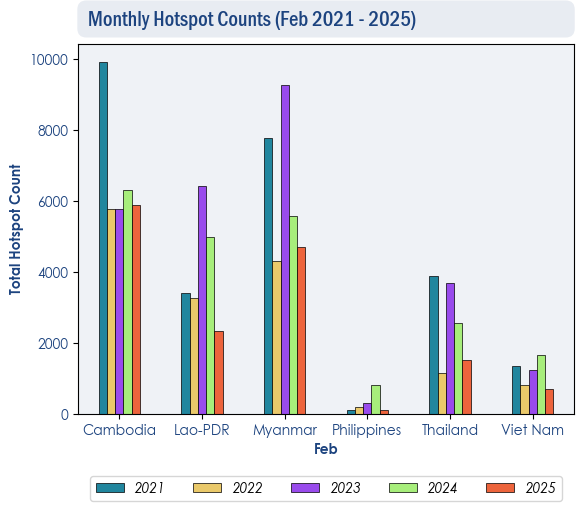
Figure 3: Hotspot counts for the northern ASEAN region for February (2021-2025) based on NOAA-20 satellite surveillance.
1.4 Scattered to widespread hotspots were detected in the northern and central parts of Myanmar, the central parts of Thailand, the southern parts of Lao PDR, and many parts of Cambodia. Isolated to scattered hotspots were detected elsewhere in the northern ASEAN region (Figure 4). Many hotspots detected in the Mekong sub-region were persistent and intense (Figures 4 & 5). This led to the development of moderate to dense smoke haze over the sub-region, particularly over the southern parts of Lao PDR, the northern and central parts of Thailand as well as most parts of Cambodia and Myanmar where the smoke haze was persistent (Figure 6 & 7). Some of this smoke haze became transboundary due to the prevailing wind conditions (Figure 7). Flight disruptions at airports due to smoke haze were reported in Thailand.
1.5 In the southern ASEAN region, the hotspot and smoke haze situation was generally subdued, with a few hotspots detected in parts of Sumatra, Peninsular Malaysia, Kalimantan and Sulawesi on a few days. Occasional slight localised smoke plumes were observed from hotspots detected in Sumatra.
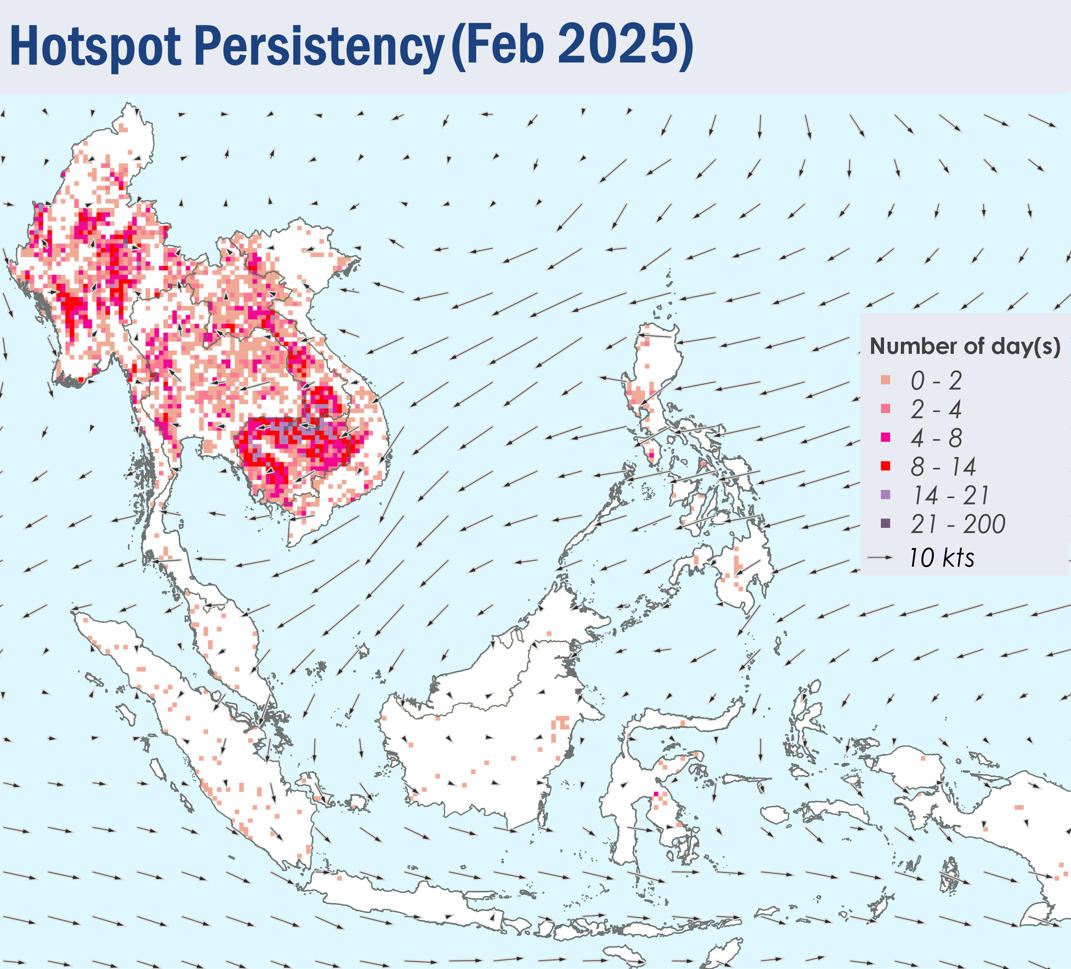
Figure 4: Distribution of hotspots detected in February 2025 based on NOAA-20 satellite surveillance.
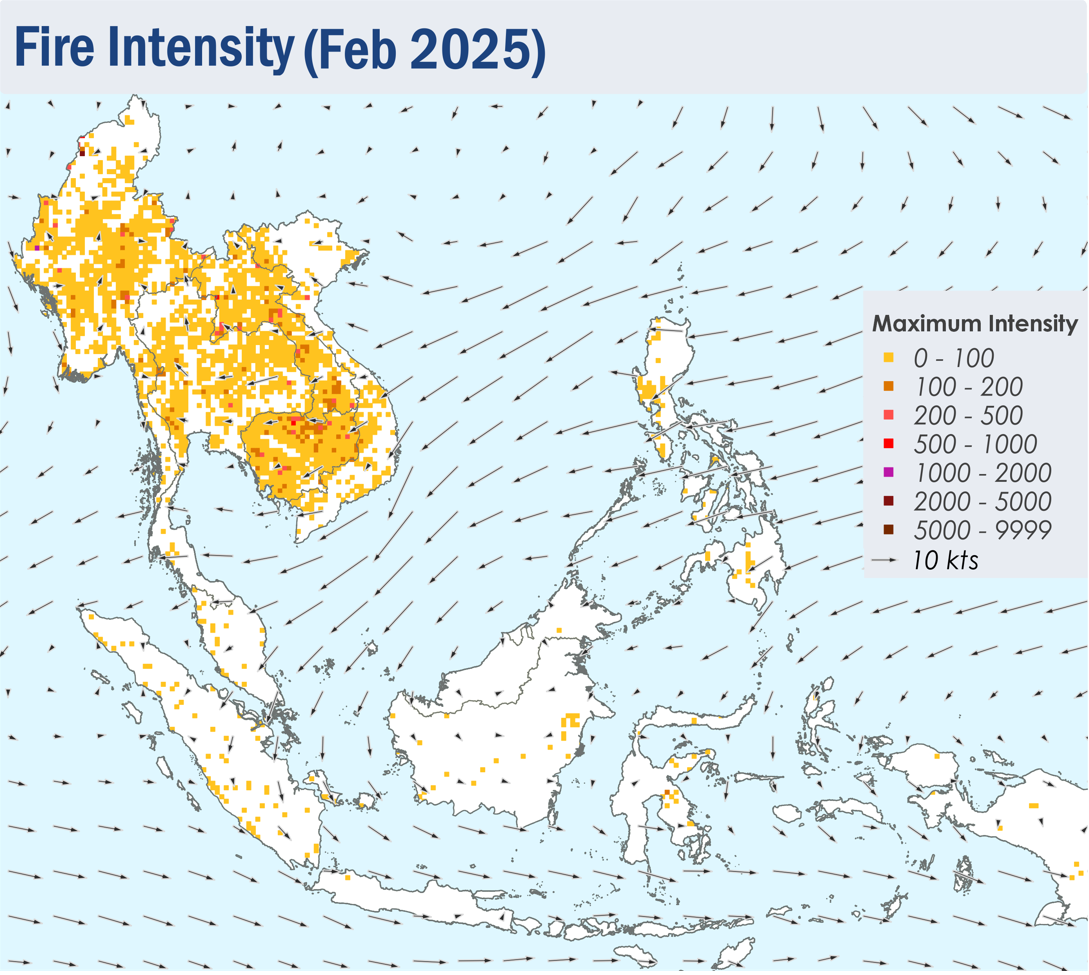
Figure 5: Maximum fire intensity in February 2025 based on NOAA-20 satellite surveillance.
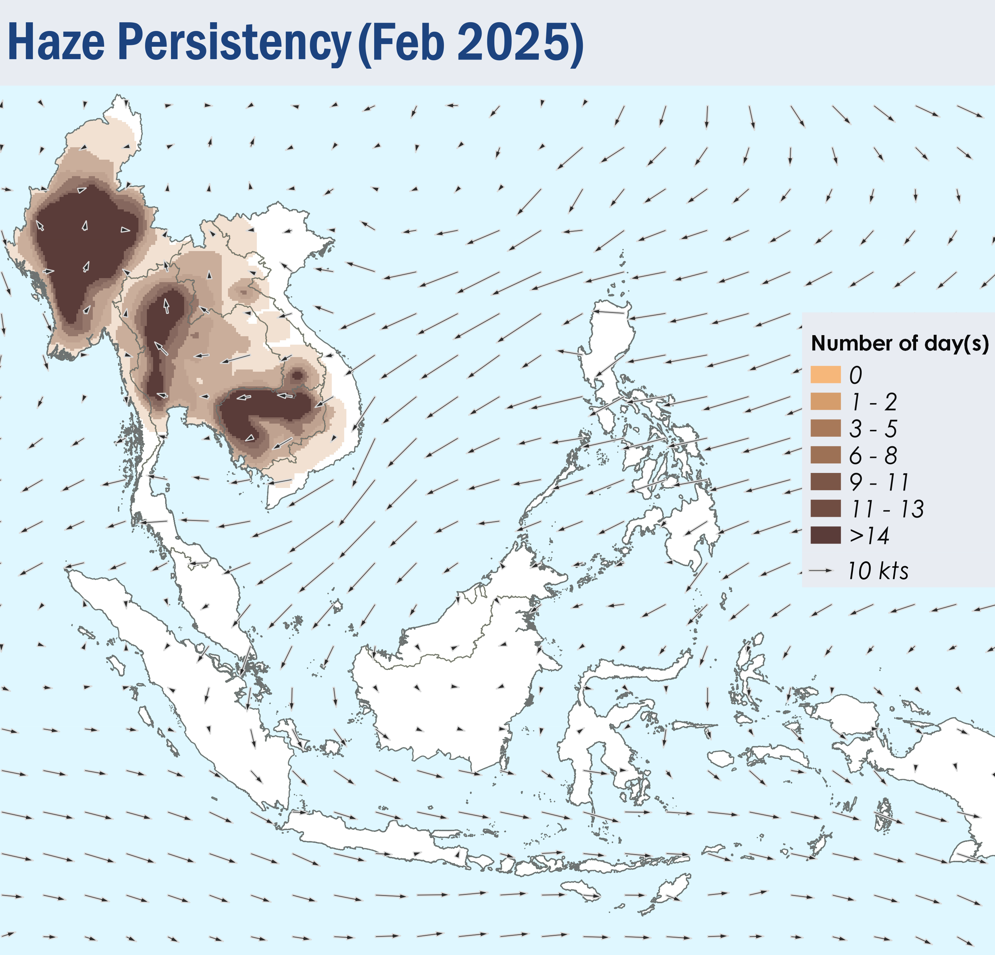
Figure 6: Number of days with moderate to dense smoke haze observed in February 2025 based on satellite imagery, ground observations, and air quality reports.
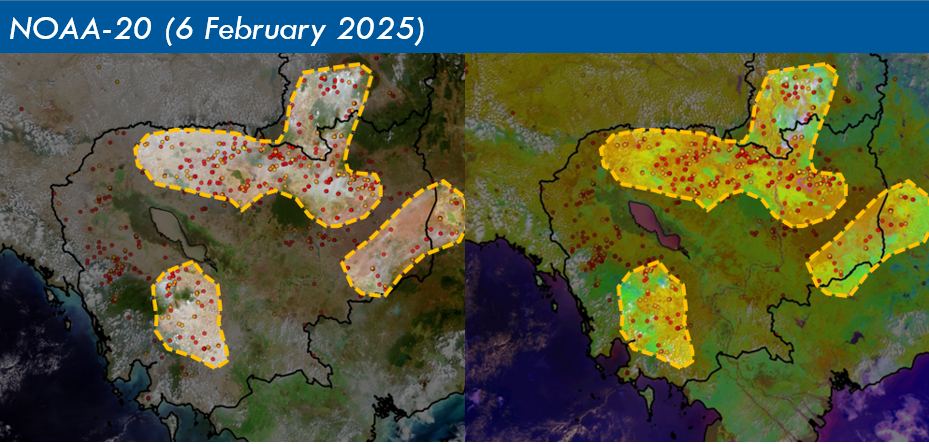
Figure 7: Transboundary smoke haze over parts of Lao PDR, Cambodia and Viet Nam on 6 February 2025. (Source: NOAA-20 satellite surveillance)
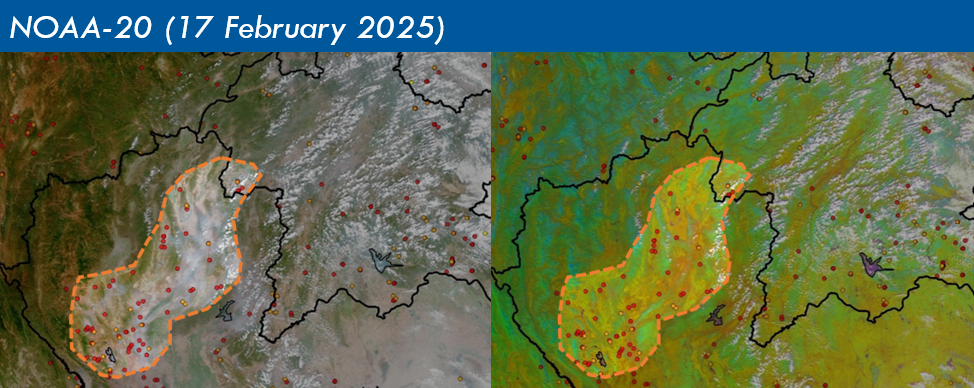
Figure 8: Transboundary smoke haze over parts of Lao PDR, and the northern parts of Thailand on 17 February 2025. (Source: NOAA-20 satellite surveillance)
Subseasonal Weather Outlook (17 – 30 March 2025)
Issued: 12 March 2025
First forecast week: 17 – 23 March 2025
Second forecast week: 24 – 30 March 2025
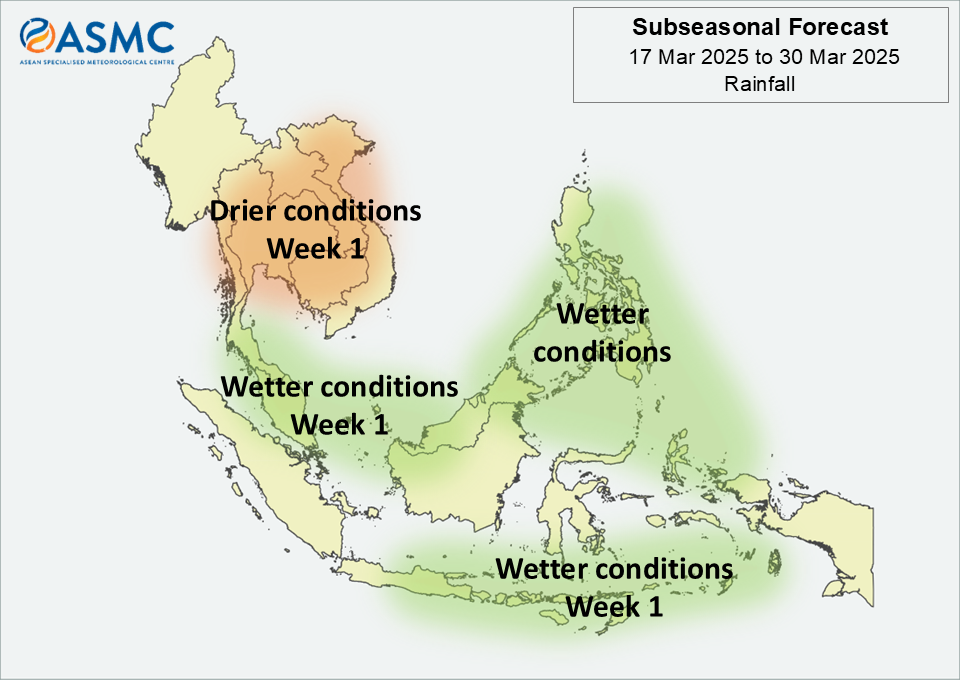
Figure 1: Rainfall Outlook
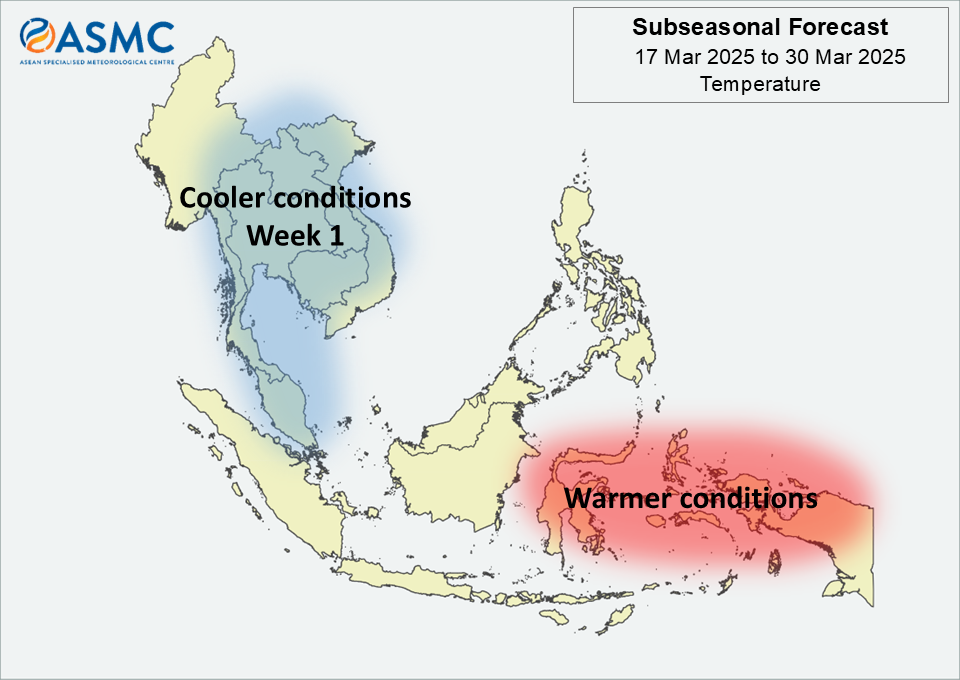
Figure 2: Temperature Outlook
Wetter conditions are predicted over much of the Maritime Continent in Week 1 (17 – 23 March). The wetter conditions are predicted to persist over the northeastern Maritime Continent in Week 2 (24 – 30 March).
Drier conditions are predicted over central and eastern Mainland Southeast Asia in Week 1 (17 – 23 March).
Cooler than usual temperature is predicted over central and eastern Mainland Southeast Asia and much of the Malay Peninsula in Week 1 (17 – 23 March). Warmer conditions are predicted over parts of the eastern equatorial region in the next fortnight (17 – 30 March).
A Madden-Julian Oscillation (MJO) signal was present over the Western Hemisphere and Africa (Phase 1) during the first week of March, based on the RMM Index. Most models predict the signal to weaken and become indiscernible around the start of the forecast period. Some models predict an MJO signal to emerge and then strengthen over the Western Pacific (Phases 6 and 7) during Week 2.
The outlook is assessed for the region in general, where conditions are relative to the average conditions for the corresponding time of year. For specific updates on the national scale, the relevant ASEAN National Meteorological and Hydrological Services should be consulted.
Review of Regional Weather for February 2025
1. Overview
1.1 During February 2025, the Maritime Continent experienced a mix of below- to above-average rainfall, with generally below-average rainfall over parts of the central and southern regions, and above-average rainfall for the northeastern region (Figure 1). Over Mainland Southeast Asia, there were no notable anomalies, typical of the dry season for this region. The largest positive (wetter) anomalies were recorded over the central Philippines, while the largest negative (drier) anomalies were recorded over Java. There were disagreements between GSMaP-NRT and CMORPH-Blended datasets, with GSMaP-NRT showing stronger and more extensive dry anomalies as compared to CMORPH-Blended. More disagreements between the datasets are also evident across the Maritime Continent, including over the Malay Peninsula, Sumatra, southern Borneo, and Papua, with CMORPH-Blended tending to show drier conditions over these regions as compared to GSMaP-NRT.
1.2 The observed rainfall anomaly pattern of above-average rainfall over the northeastern Maritime Continent and below-average rainfall over the central and southern Maritime Continent isare consistent with the predictions from the subseasonal weather outlooks for February 2025 (3 – 16 February 2025, and 17 February – 2 March 2025). The observed pattern of above-average rainfall over northeastern Maritime is also consistent with the February 2025 seasonal outlook, although the below-normal rainfall over parts of the Maritime Continent is not well represented.
Figure 1: Rainfall anomalies for February 2025 based on GSMaP-NRT data (left) and CMORPH-Blended data (right). The climatological reference period is 2001-2023. Green colour denotes above-average rainfall (wetter), while orange denotes below-average rainfall (drier).
1.3 Below- to near-average temperatures were recorded over central and eastern Mainland Southeast Asia and parts of the western Maritime Continent in February 2025 (Figure 2). Elsewhere, above-average temperatures were recorded over western Mainland Southeast Asia and the central and eastern Maritime Continent. The coldest anomalies (-1°C – -2°C below average) were recorded over northern Viet Nam, while the warmest anomalies (1°C – 2°C above average) were recorded over central Myanmar.
Figure 2: Temperature anomalies for February 2025 based on ERA-5 reanalysis. The climatological reference period is 2001-2023. Red colour denotes above-average temperature (warmer), while blue denotes below-average temperature (colder).
2. Climate Drivers
2.1 In the first week of the February, a Madden-Julian Oscillation (MJO) signal was observed over the Maritime Continent (Phase 5). The MJO propagated eastwards through the Western Pacific (Phases 6 and 7) in the first two weeks of February, reaching the Western Hemisphere (Phase 8) at the start of the third week. The MJO signal weakened during the third week, becoming inactive shortly before emerging at the end of the month in the Western Hemisphere (Phase 1). For February, Phase 5 typically brings wetter conditions over much of the Maritime Continent and Phase 6 tends to bring wetter conditions over the eastern Maritime Continent. Phase 7 tends to bring drier conditions for the western Maritime Continent, and Phases 8 and 1 typically bring drier conditions to much of the Maritime Continent. This observed MJO signal is in line with the mix of below- to above-normal rainfall anomalies in Figure 1.
Figure 3: The MJO phase diagram. The diagram illustrates the movement of the MJO through different phases, which correspond to different locations along the equator (denoted in the text with the first day of the month in blue and the last day of the month in red). The distance of the index from the centre of the diagram is related to the strength of the MJO. Values within the grey circle are considered weak or indiscernible (data from the Bureau of Meteorology, Australia).
2.2 In February 2025, La Niña conditions were present. Sea surface temperatures in the Nino3.4 region (used to monitor ENSO) indicated La Niña conditions and atmospheric indicators (cloudiness and trade winds) also showed signs of La Niña. La Niña events tend to bring wetter-than-average conditions to much of the Maritime Continent during this time of the year.
